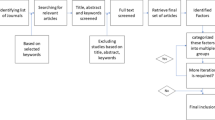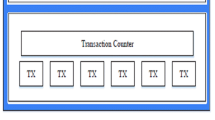Abstract
For commerce (electronic or traditional) to be effective, there must be a degree of trust between buyers and sellers. In traditional commerce, this kind of trust is based on such things as societal laws and customs, and on the intuition people tend to develop about each other during interpersonal interactions. The trustworthiness of these factors is based, to a large extent, on the geographical proximity between buyers and sellers. But this proximity is lost in e-commerce.
In conventional electronic marketplaces the trust among participants is supported by a central server which imposes certain trading rules on all transactions. But such centralized marketplaces have serious drawbacks, among them: lack of scalability, and high cost.
In this paper we propose the concept of Decentralized Electronic Marketplace (DEM) which allow buyers and sellers to engage in commercial transactions, subject to an explicitly stated set of trading rules, called the law of this marketplace—which they can trust to be observed by their trading partners. This trust is due to a decentralized, and thus scalable, mechanism that enforces the stated law of the DEM. We implement an electronic marketplace for airline tickets in order to illustrate the feasibility of the proposed concepts for decentralized and secure electronic marketplace.
Similar content being viewed by others
References
Open Market (1998). Internet commerce: the open market transact solution. Technical White Paper, Open Market, Inc., July 1998. Available from www.openmarket.com.
Wurman, P., Wellman, M., & Walsh, W. (1998). The Michigan Internet AuctionBot: a configurable auction server for human and software agents. In K. P. Sycara & M. Wooldridge (Eds.), Proceedings of the 2 nd international conference on autonomous agents (agents’98) (pp. 301–308). New York: ACM Press.
Lacoste, G. (1997). SEMPER: A security framework for the global electronic marketplace. Comtec – the Magazine for Telecommunications Technology.
Minsky, N. (1991). The imposition of protocols over open distributed systems. IEEE Transactions on Software Engineering, February 1991.
Minsky, N. (2005). Law-governed interaction (LGI): a distributed coordination and control mechanism (An introduction and a reference manual). Technical Report, Rutgers University, Available at: http://www.moses.rutgers.edu/documentation/manual.pdf. June 2005.
Serban, C. The LGI Web-Site. Available at: http://www.moses.rutgers.edu.
Chen, Y., Serban, C., Zhang, W., & Minsky, N. (2005). Towards a decentralized and secure electronic marketplace. In Proc. of the 5th IADIS e-commerce conference (IADIS e-commerce 2005). Porto, Portugal, December 2005.
Schmees, M. (2003). Distributed digital commerce. In Proceedings of the 5th international conference on electronic commerce (ICEC2003) (pp. 131–137). ACM: Pittsburgh, PA, USA.
Wainder, M. (1996). Development of a secure electronic marketplace for Europe. In Fourth European symposium on research in computer security (ESORICS). Rome, Italy, September 1996.
Xiong, L., & Liu, L. (2003). A reputation-based trust model for peer-to-peer eCommerce communities. In Proc. of the fourth ACM conference on electronic commerce (EC’03). San Diego, June, 2003.
Xiong, L., & Liu, L. (2004). Reputation and trust in mobile commerce. In Advances in security and payment methods for mobile commerce. Idea Group, November, 2004. ISBN 1591403456.
Fontoura, M., Ionescu, M., & Minsky, N. (2005). Decentralized peer-to-peer auctions. Journal of Electronic Commerce Research, January 2005.
Ao, X., & Minsky, N. (2003). Flexible regulations of distributed coalitions. In Proceedings of the eighth European symposium on research in computer security (ESORICS). Norway, October 2003.
Minsky, N., & Ungureanu, V. (2000). Law-governed interaction: a coordination and control mechanism for heterogeneous distributed systems. TOSEM, ACM Transactions on Software Engineering and Methodology, 9(3), 273–305.
Ungureanu, V., & Minsky, N. (2000). Establishing business rules for inter-enterprise electronic commerce. In Proceedings of the fourteenth international symposium on distributed computing (DISC 2000) (pp. 179–193). LNCS 1914, Toledo, Spain, October 2000.
Schneier, B. (1996). Applied cryptography. New York: Wiley.
Ellison, C. (1999). The nature of a usable PKI. Computer Networks, 31, 823–830.
Ao, X., & Minsky, N. (2003). Flexible regulation of distributed coalitions. In Proc. of the 8th European symposium on research in computer security (ESORICS), Gjøvik, Norway, October 2003.
Minsky, N., & Murata, T. (2004). On manageability and robustness of open multi-agent systems. In C. Lucena, A. Garcia, A. Romanovsky, J. Castro, & P. Alencar (Eds.), LNCS : Vol. 2940. Computer security, dependability, and assurance (pp. 189–206). Berlin: Springer.
Smith, R. G. (1988). The contract net protocol: high-level communication and control in a distributed problem solver. In Distributed artificial intelligence (pp. 357–366). San Francisco: Morgan Kaufmann.
Author information
Authors and Affiliations
Corresponding author
Rights and permissions
About this article
Cite this article
Serban, C., Chen, Y., Zhang, W. et al. The concept of decentralized and secure electronic marketplace. Electron Commerce Res 8, 79–101 (2008). https://doi.org/10.1007/s10660-008-9014-0
Published:
Issue Date:
DOI: https://doi.org/10.1007/s10660-008-9014-0




